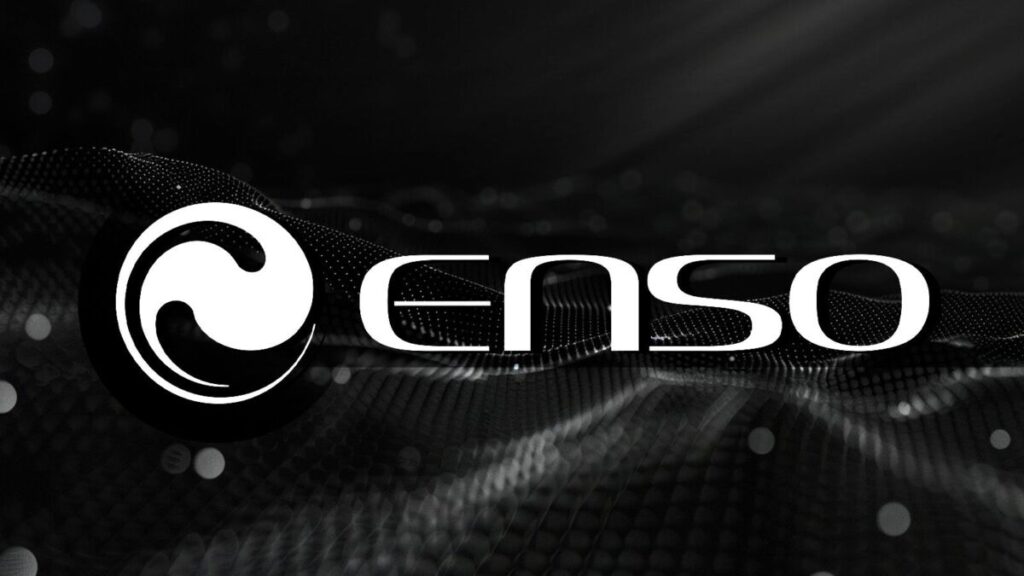
What Is Enso?
Unified intent engine
One of the biggest hurdles in decentralised application development today is fragmentation. Hundreds of blockchains run on different virtual machines (EVM, SVM, MVM), each with its own language, tooling and state model.
https://www.enso.build/
Developers who want to combine several DeFi protocols or bridge assets across chains need to write custom integrations for every network and carefully choreograph multiple smart contract calls. The result is costly integration work and a painful user experience.
Enso is a response to this problem. Built as a Tendermint based Layer 1 blockchain, Enso acts as a “unified intent engine” that maps all smart contract interactions into a single shared state. Instead of worrying about implementation details, developers describe the outcomes they want, and the Enso network automatically generates and executes the required bytecode across any blockchain.
This intent driven approach radically simplifies cross chain composability and opens the door to an ecosystem where multi chain DeFi strategies can be expressed through a single API call.
The current crypto ecosystem is fractured. Many chains Ethereum, Solana, Cosmos, Polkadot, Avalanche and countless rollups offer different consensus mechanisms and programming models. Developers must learn multiple languages (Solidity, Rust, Vyper, Ink!) and audit numerous protocol contracts, while users bounce between wallets, bridges and signatures.
According to Shoal Research, this fragmentation makes integrating protocols extremely costly and slows innovation; Enso’s early history underscores this challenge. In 2021 Enso launched a “vampire attack” on six DeFi protocols to bootstrap liquidity, but the team quickly realised the integration overhead was unsustainable.
The project pivoted towards a middle layer API for DeFi interactions and subsequently evolved into an intent driven Layer 1. Today Enso’s network settles over $15 billion in volume for more than 75 live applications and 180 protocols , proving the demand for unified cross chain infrastructure.
Enso is described by CoinDesk as a decentralised shared network designed to generate executable bytecode for smart contracts across multiple blockchains, rollups and appchains. The network functions as an intent engine: developers or users specify their desired result called an intent and Enso orchestrates the required actions across chains to fulfil that outcome.
Under the hood, Enso runs on a Tendermint consensus engine and stores state from EVM, SVM and MVM chains, enabling seamless execution across diverse blockchain frameworks. By mapping all smart contract interactions into a unified state, Enso lets any contract be composed with any other without bespoke integrations .
Traditional blockchain interactions require developers to specify each step bridge tokens, swap on a DEX, deposit into a lending protocol, and so on. Enso flips this model. Users define only what they want, not how to get there. For example, the NFTPlazas article explains that instead of manually bridging ETH to Optimism and swapping for the highest yield stablecoin, a user could submit a single intent: “Swap ETH for the highest‑yield stablecoin on Optimism”. The network interprets this highlevel request and finds the optimal path across chains, abstracting away complex transactions . This paradigm dramatically reduces development overhead and improves user experience.
To fulfil intents, Enso decomposes complex workflows into Actions and Shortcuts. An Action is a reusable abstraction of a smart‑contract operation (e.g., swap, lend, deposit). All similar operations across multiple blockchains map to the same Action. Shortcuts are compositions of Actions that create full workflows (e.g., lending and rebalancing) packaged into a single API call . As NFTPlazas notes, this modular approach has enabled Enso to integrate over 200 protocols and power 75+ on‑chain apps, facilitating more than $15 billion in transaction volume without exploits . Developers contribute Actions and Shortcuts to a shared library, gradually building a comprehensive map of executable relationships.
Once an intent is submitted, specialist nodes called Graphers search the network’s map to construct the most efficient execution path. They compete to produce optimal bytecode by considering factors such as gas costs, slippage and yields. Validators, the network’s security backbone, simulate and verify each proposed solution across relevant chains to ensure correctness . They choose the best solution, discarding others, which keeps the network lean and efficient. Validators stake ENSO tokens and face slashing if they sign off on malicious or incorrect execution paths.
A Contribution‑Driven Network
Enso’s architecture is built around four roles: Action Providers, Graphers, Validators and Consumers. Gate.io’s explainer summarises these roles: Action Providers offer reusable contract templates and earn a share of fees when used.
Graphers integrate and compete to produce optimal bytecode; Validators audit results to maintainsecurity; and Consumers pay execution fees to drive the network. This structure creates a self‑sustaining economic loop where contributions are directly rewarded and the best solutions emerge from competition.
CoinDesk outlines the technical layers underpinning Enso: a Requesting layer for submitting intents, an Action Submission process for validating new abstractions, and a Solution Aggregation layer where multiple Graphers propose solutions and Validators select the optimal one.
Validators fork the target chain’s state, execute the proposed bytecode in simulation, and verify outcomes before committing them to the canonical chain. All abstractions and interaction data are stored in Enso’s shared state, creating a universal reference for cross chain composability. Shoal’s deep dive emphasises that Enso’s shared state extends across EVM, SVM and MVM blockchains , effectively serving as a “Zapier for Web3” that abstracts away the complexities of bridging and state synchronisation .
The ENSO token is the lifeblood of the Enso ecosystem. It has a fixed supply of 100 million tokens and plays several roles:
- Gas payments: ENSO is used to pay execution fees and modify the network state .
- Governance: token holders vote on upgrades, economic parameters and protocol changes .
- Staking and penalties: Validators, Graphers and Action Providers stake ENSO to secure the network; misbehaviour results in slashing .
- Delegated earnings: holders can delegate their tokens to network participants to earn staking rewards and strengthen network security .
Enso’s journey began in 2021 when the project used a “vampire attack” to attract liquidity from six DeFi protocols . This initial experiment exposed how difficult and expensive DeFi integration was. The team subsequently pivoted to provide a DeFi middleware API and eventually built a full Layer 1 designed for cross‑chain execution.
The core team, Connor Howe, Peter Phillips and Milos Costantinifounded Enso in 2024 with the goal of solving blockchain usability . Their backgrounds in distributed systems and smart contract development informed Enso’s design as a shared coordination layer for the multi‑chain ecosystem.
Enso’s adoption has been impressive for a relatively new network. By late 2025, more than 75 applications and 180 protocols had integrated Enso, with transaction volume exceeding $15 billion . Medium reports that over 60 teams are actively building on Enso and more than $13 billion of on‑chain activity has been coordinated through the network. Use cases span wallets, vault strategies, liquidity routers, cross chain financial applications and automated DeFi strategies . Shoal notes that direct intents, user requests expressed as high level outcomes, now number over 450 k . The network’s library of templates, actions and shortcuts is constantly growing, making it easier for developers to compose new DeFi products.
Beyond DeFi, Enso’s intent‑driven architecture opens a wide range of possibilities. CoinDesk lists cross‑chain contract orchestration, automated strategy generation, interoperable NFT and gaming economies, cross chain governance frameworks and even AI agents capable of blockchain‑native execution as potential applications. Enso also allows developers to build multi chain dashboards, tools and services by leveraging live data through its API. Because the network abstracts away bridging and liquidity routing, developers can innovate without worrying about gas tokens, mempool management or liquidity fragmentation . As more protocols and rollups emerge, Enso’s shared execution layer could become an essential piece of Web3 infrastructure.
Enso represents a fundamental shift in how blockchain applications are built and executed. By centring on intents rather than individual transactions, it abstracts away the complexity of multi chain integration and provides a unified engine for cross‑chain computation. Developers can express their goals and rely on a network of competitive solvers and validators to produce secure, optimised bytecode.
The ENSO token coordinates incentives across roles and underpins governance, ensuring that the network evolves in a decentralised manner. With a growing ecosystem of actions, shortcuts and applications, Enso has the potential to become the middleware layer that connects all of Web3. While its token is still volatile and crypto markets are inherently risky, Enso’s technology offers a compelling vision for simplifying blockchain development and unlocking cross‑chain composability .
